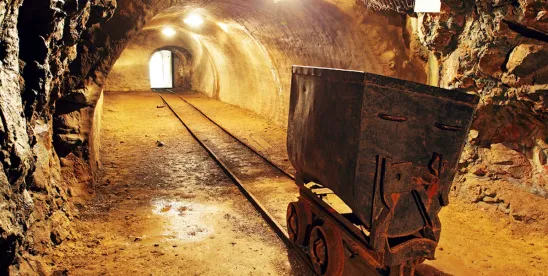Case decisions and Mine Safety and Health Administration enforcement trends are the subject areas that tend to have the biggest impact on the compliance activities of mine operators and on the work of attorneys who focus on mine safety legal issues. But the one topic that currently has everyone’s attention is the spike of fatal accidents occurring across the mining industry.
Case decisions and Mine Safety and Health Administration (MSHA) enforcement trends are the subject areas that tend to have the biggest impact on the compliance activities of mine operators and on the work of attorneys who focus on mine safety legal issues.
Quick Hits
- Twenty-four miners have died thus far in 2023, an increase in fatalities compared with 2022 that has prompted operators to search for trends and safety gaps.
- Youth and inexperience do not appear to be major factors; of the accidents recorded so far in 2023, the average age was forty-eight years old and the average level of experience at the activity at the time of the accident was more than eight years.
- Safety directors report that safety trainings that have personnel work through the facts of an incident report and solve problems can be particularly effective, as personnel ultimately learn how things went wrong in the context of an actual event and the message tends to carry more weight.
But the one topic that currently has everyone’s attention—the elephant in the room that no one can ignore—is the spike of fatal accidents occurring across the mining industry.
As of July 5, 2023, there had been twenty-four fatal accidents in 2023. At this same time in 2022, there had been fifteen fatalities.
A lot of very smart people throughout the industry have been trying to figure out what’s happening, looking for trends or trying to identify gaps in the safety coverage. With the final investigation reports for these incidents still in development, it is difficult for those on the outside to glean a fundamental set of factors.
There is a tendency by some to point to the increase of activity coming out of the pandemic and a younger, less-experienced workforce. While the manpower shortage and the drain of experienced personnel in the industry has certainly raised challenges for training, the numbers do not bear this out as a major cause.
In the twenty-four accidents, the average age was forty-eight years old and the average level of experience at the activity at the time of the accident was roughly eight-and-a-half years. With that said, it does bear pointing out that, within those statistics, there were three miners who were twenty-five years of age or younger whose average level of experience was thirty-two weeks.
Steps Toward Safety
MSHA has classified fourteen of the twenty-four fatalities as related to machinery or powered haulage. In reviewing the bare-bones best practices suggested by the agency in the safety alerts for those events, we see several recommendations repeated.
For machinery accidents (generally involving repairs and maintenance or equipment), the agency emphasizes the necessity of blocking machinery against motion, the safe positioning of personnel, examining work areas and equipment for unsafe conditions, and task-training miners in safe work procedures.
With respect to powered haulage accidents, MSHA stresses the more effective identification of hazards in pre-operation inspections, enhanced task-training related to equipment operation hazards, safe positioning of personnel around mobile equipment, and the functional testing of brakes and other safety devices.
Experience tells us that every accident has a myriad of different factual variables that make it difficult to condense a central theme. Until we know all the facts of these events, the lessons will remain somewhat blurred. Nonetheless, safety directors report that constantly reinforcing the basics, like the MSHA-recommended best practices set out here, is the most effective way to produce good, safe, work practices and effective hazard recognition that protect miners.
Safety experts also state that certain types of training land the message with miners more effectively. For instance, one method that resonates with miners is to take an accident report and turn it into a fact pattern. The instructor does not tell anyone the result up front. Instead, the instructor has personnel work through the facts and solve the problem. When personnel ultimately learn how things went wrong in an actual event, the message carries much more weight. With a concise outline, operators have found that this training format can work in morning toolbox meetings, as well as in larger safety get-togethers.
Other companies build safety discussions around near misses at their operations. They focus on the facts, extrapolate about the scenarios that could have produced an injury or worse, and ask for feedback about procedures and steps to enhance safety in the future.
Of course, there is no miracle solution to reversing the current fatal accident trend. MSHA is focusing on impact inspections, safety and health initiatives, and stand-downs in an effort to raise awareness.
In the end, it is going to come down to hard work by everyone in the industry doing the time-honored things that promote safety. Everyone is in this together.





 />i
/>i
